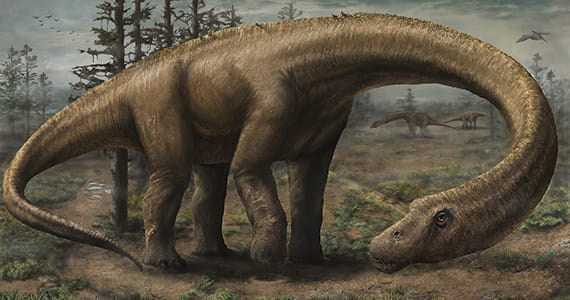We Think Big

Believe it or not, a team of paleontologists from Drexel have uncovered the remains of the most complete dinosaur skeleton to date. Coming in at an incredible 130 feet long and 65 feet tall, Dreadnoughtus (which aptly means fear nothing) is one of the largest sauropod dinosaurs to walk the earth!
Connections in Patagonia, Argentina and lots of support happened to lead the team to one of the biggest discoveries in the paleontology world thus far. Quite literally. Soon after arriving, the first bone was uncovered, with the other 144 following over the next few years.
The skeleton is about 70 percent complete, with the recovery of most of the tail, neck, scapula, ribs, toes, arms, legs, one claw, one tooth, and a bit of jaw. Skulls and skull fragments are rare to find in herbivores. Their skulls didn’t grow to be as strong as a carnivore’s since herbivores swallowed food whole, which means they disintegrated quickly.
Dreadnoughtus’s bones are the property of Argentina, but some lucky dinosaur enthusiasts saw the first and only bone display (a toe and leg bone) at Dreadnoughtus Day, hosted by The Academy of Natural Sciences of Drexel University. Once the bones are sent back, the team will use plaster-casted versions of each bone they made and robotics to understand Dreadnoughtus' movement. They also digitally 3D laser-scanned each bone into an interactive PDF. The model can be rotated for muscle attachment study to understand how the limbs evolved, and it also gives the public the chance to study fossils like this for the first time. Some museums have already gone digital pdf as supplements for the public, but Dr. Lacovara believes this is the first time it will be used for a new dino species.
Dreadnoughtus's unveiling has been in the making for 10 years, from the skeleton being found in Argentina, transporting the 16 tons of bones to Philadelphia, removing rock from them, and finally publishing the results. The team believes there is more of Dreadnoughtus in Patagonia and hopes to go back and find out.
You can read the published findings in Nature. To see more from the College of Arts and Sciences, visit the College's website.